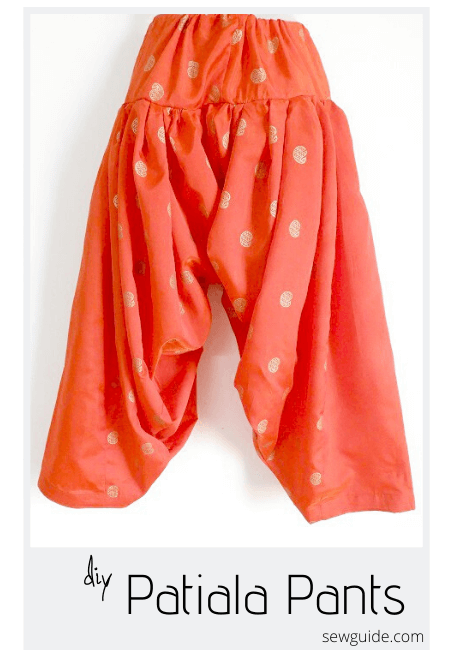
Punjabi Patiala Pants – This is a loose salwar pants from the Patiala City in the Northern region of Punjab state in India. Wikipedia says that this pants was worn by the king of Patiala – that is royal! It is voluminous and needs about 4 1/2 meters of fabric – if you cut it right. Otherwise you need even more.
Here is how to make a free size version of it. Increase or decrease the waistband width to suit your measurement.
Choose a free flowing drapey fabric like rayon, thin cotton, satiny silk – other wise you are going to look like you have another person inside your pants. It is worn with tight fitting tunic /salwar tops
How to sew Patiala Pants
Step 1. Cut out the leg pieces.
You can either cut the leg pieces as one ( so that you have 2 leg pieces to join) as in the picture below or cut them as three and join the extra piece in the middle ( And you have 6 pieces to join altogether).
You can cut fabric like this.
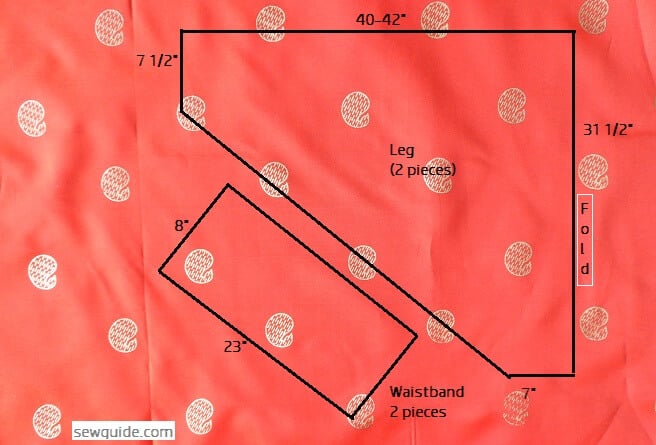
Or like this .
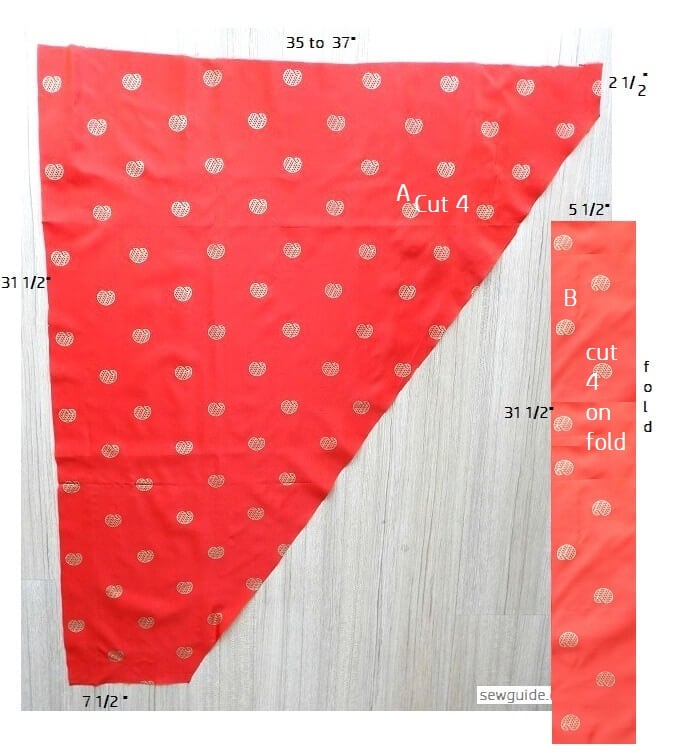
And then join the middle fabric piece (B) between the two big pieces (A).
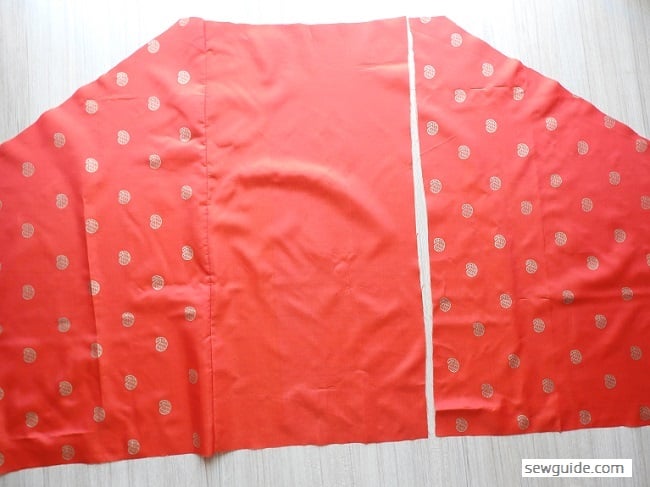
Step 2. Make the waistband
Join the short edges of the waistband piece, with a 1/2 inch seam allowance. Leave 2 1/2 inch unstitched on the top edge.
Fold the waistband seam allowance on the un-stitched portion to the inside and sew in place.
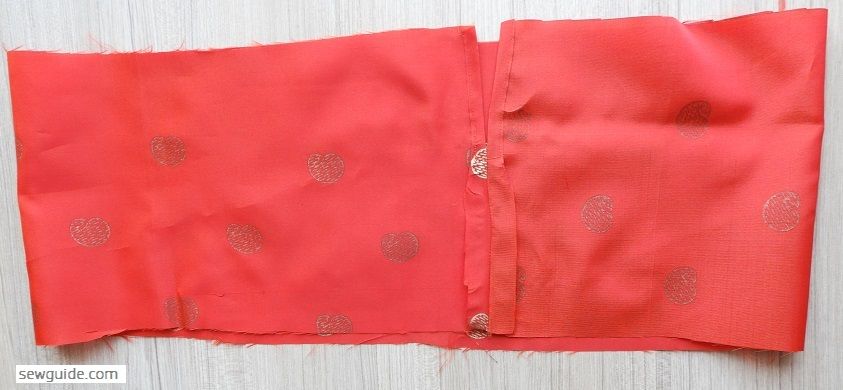
The white stitching line in the picture is your reference.
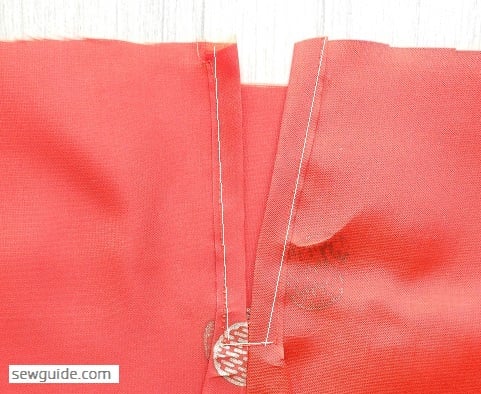
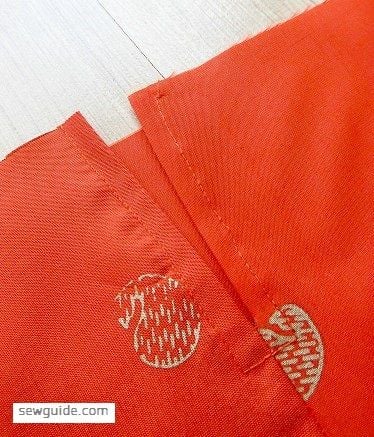
Fold the top edge to the inside twice and stitch in place – this forms the casing for the drawstring.
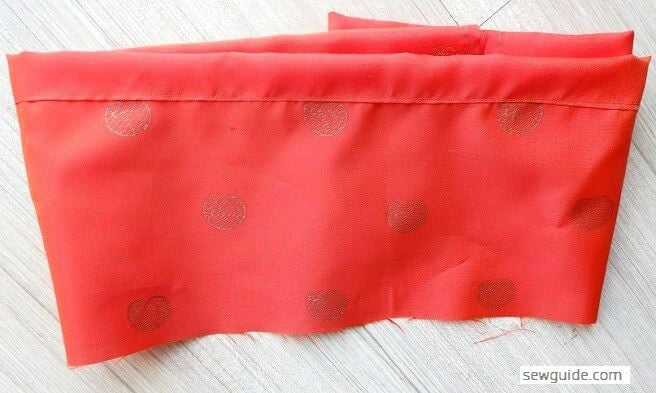
Step 3 Sew the leg hem
You need to cut 2 fabric pieces of 2 inch wide piece by 19 inch which is going to be the facing. Attach a piece of interfacing to this piece. You can cut out 1/4 inch along the edges from the interfacing so that it is not thick as you stitch. Attach.

Keep it along the leg bottom edge right sides together.
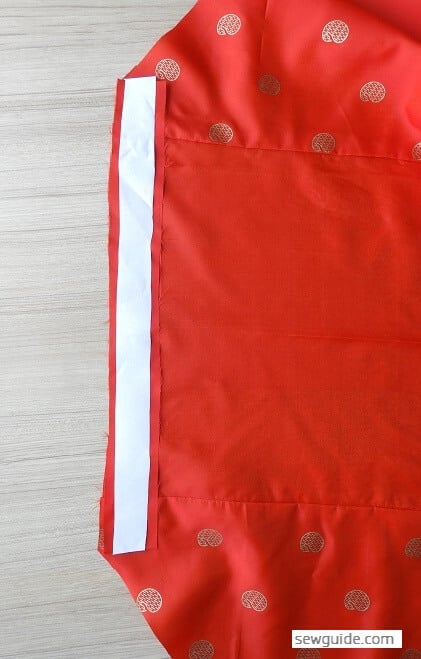
Stitch together.
Fold to the back side and stitch in place.
Step 4 Join the side seams of the legs
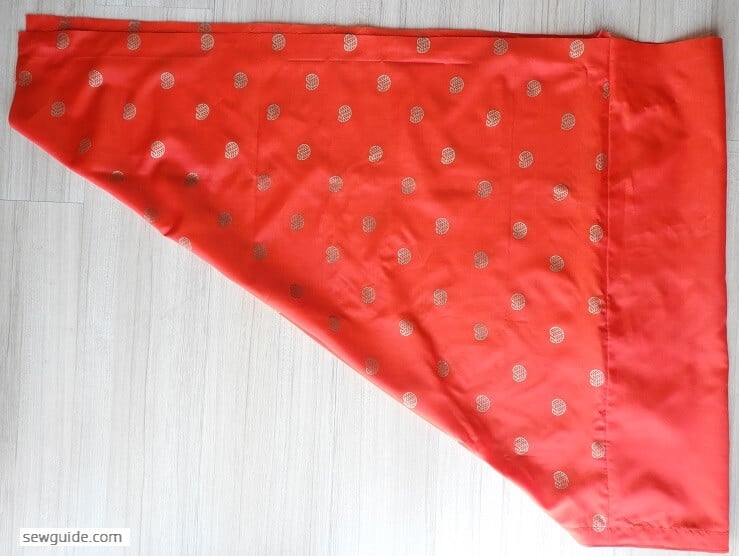
This is how one leg looks. Finish both the legs the same way.
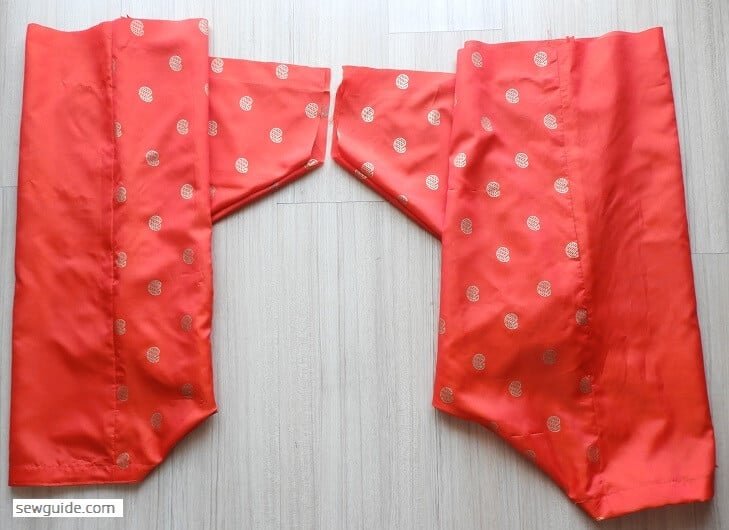
Step 5 Join the crotch seam
Keep the two legs together along the 7 inch and sew that seam right sides together.
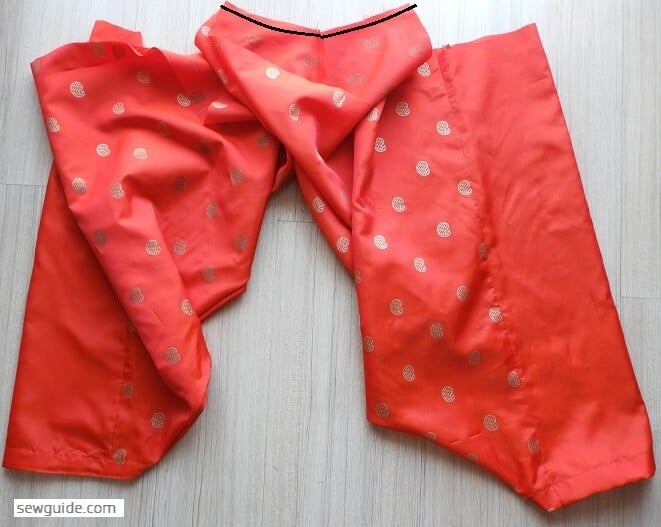
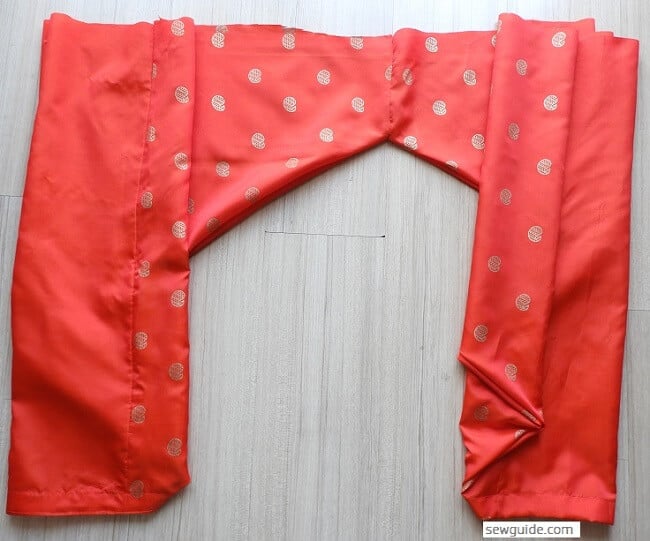
Step 6 Join the legs to the waistband.
You have a difficult job here. You have to join the waistband to a leg piece edge which is about 4 times bigger.
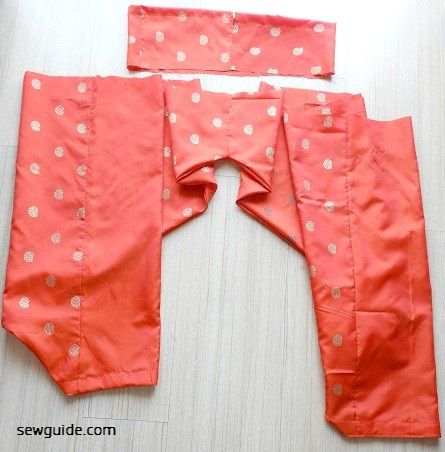
One important thing is to pin the waistband in 4 sections at the front, back and side seams. Usually you can make pleats for this, but then if you are lazy, just gather. If you do not know how to gather fabric check this post here.
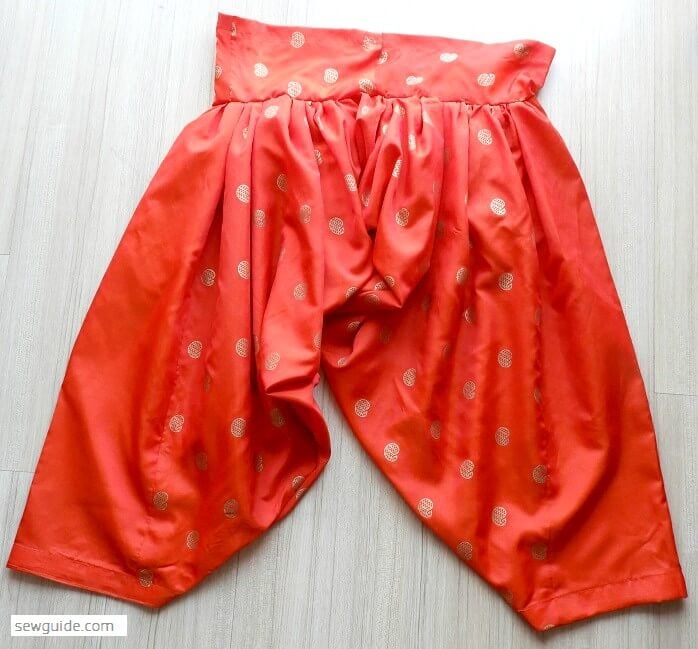
Step 7 Insert drawstring.
You can insert thin fabric tubes as drawstring and tie at the waist. Check out this post on making fabric tubes.
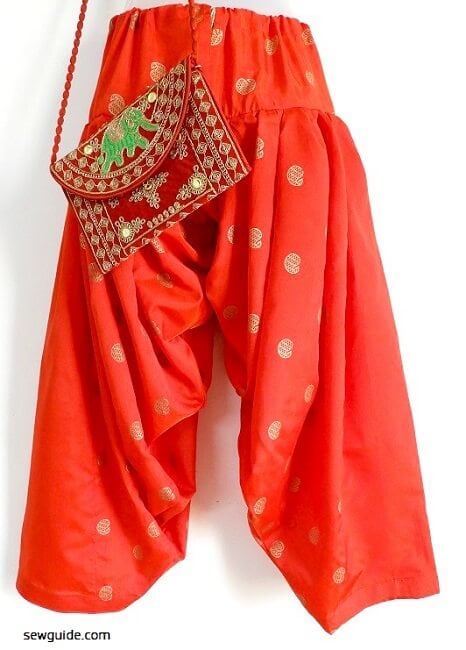
Related posts : How to sew salwar pants ; Sew salwar kameez; How to sew kurta tunic top

Hi! Thanks for the tutorial; it’s very clear. There’s one thing I’m wondering about, though: why does the leg need to be cut in three different pieces (front, back, side) that are then joined together, and not as just one big triangular-ish piece where you’d only need to fold it in half and then only stitch it at the inseam? Most Asian patterns seem to advise the three- or two-piece method but Western ones (for loose trousers like these, that is) are likelier to suggest cutting the leg as one piece without a side seam, so I guess I’m more used to the latter? Thanks!